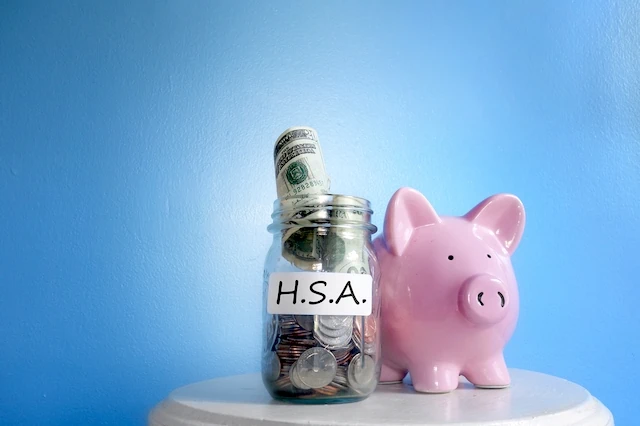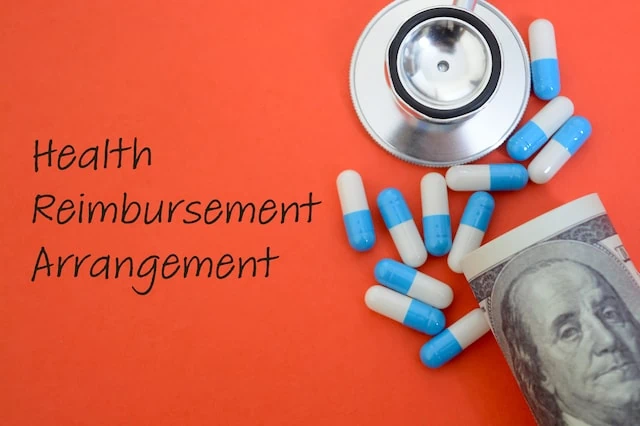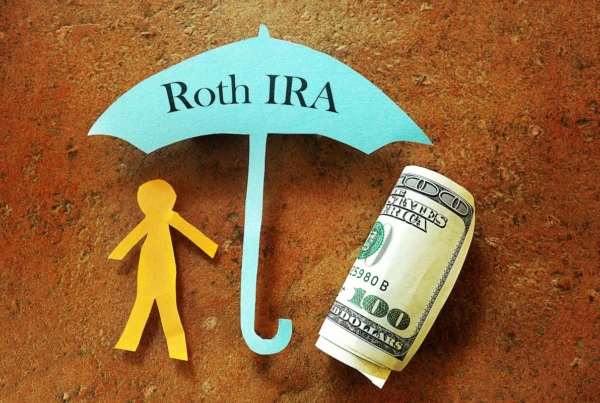Let’s face it: Medical bills can be ridiculously expensive. Anyone who’s ever broken an arm, had a baby, spent time in the emergency room, or stayed a few nights in the hospital knows this very well.
But how expensive are they, exactly? According to data from the Centers for Disease Control and Prevention, health care spending reached $4.9 trillion in 2023. While Medicare, Medicaid, private insurance and other outside sources accounted for the vast majority of that spending, American families bore 10%, or roughly $506 billion, in the form of out-of-pocket expenses.
Fortunately, certain financial products, like health savings accounts (HSAs) and health reimbursement arrangements (HRAs) can help you offset the high cost of medical expenses. But even though HSAs and HRAs can be used for similar purposes, they work very differently.
If an HSA or HRA is available to you, here’s an explanation of what they are, how they work, and how they’re different.
Featured Financial Products
Related: How to Use Your HSA for Retirement
What’s a Health Savings Account (HSA)?
A health savings account is a tax-advantaged account you can use to offset medical costs now and in the future. HSAs typically have a savings and investment component, and these accounts can act as a supplement to your regular retirement savings. However, you must be covered by a high-deductible health plan (HDHP) to put money in an HSA.
With an HSA, you’ll get a triple dose of tax advantages—tax-deductible contributions, tax-free growth, and tax-free withdrawals for qualified medical costs. The IRS has a long list of what’s considered a qualified medical cost, but it includes common things like:
- Doctor visits
- Vision care (e.g., eyeglasses or contact lenses)
- Lab fees
- Hearing aids
- Hospital stays
- Chiropractic care
- Certain dental expenses
- Therapy visits
- Prescription drugs
- Smoking cessation programs
- X-rays
While you won’t pay taxes or penalties when you withdraw funds from an HSA to cover eligible expenses, you’ll need to pay taxes and might also be hit with a 20% penalty if you use HSA funds for a non-qualified purpose. So, it’s typically not a good idea to use your HSA money for something besides qualified medical expenses.
However, the penalty won’t apply to withdrawals made after you become disabled, turn 65 years old, or die. So, for example, if you’re 50 years old and withdraw $1,000 from your HSA to pay for a new couch, you’ll owe federal income tax on the $1,000 (at your federal income tax rate) in addition to a $200 penalty. On the other hand, if you’re 70 years old and use HSA money to buy a couch, you’ll only owe the federal tax—not the penalty.
YATI Tip: If you have an HDHP, it’s usually worth putting money into an HSA just so you can withdraw funds for medical costs now or in the future. As you age, you’re likely to have more medical expenses, so having the flexibility to use HSA money when you want is a big benefit.
Related: How Are Social Security Benefits Taxed?
How Does a Health Savings Account Work?

If you’re eligible for an HSA, you can get an account in one of two ways: either through your employer or on your own. Many employers offer an HSA option for employees, so it could be worth checking with your employer first if you’re interested in opening an HSA. However, you can also shop around for options on your own if that appeals to you.
HSAs act as savings and investment vehicles. Some accounts have no minimum balance requirement for investing, while others will require you to meet a particular savings balance before you can invest. For instance, certain accounts require you have at least $1,000 in HSA money to start investing. But others, like the Fidelity HSA, don’t have a minimum balance requirement at all.
Similar to retirement accounts, the IRS sets annual contribution limits for HSAs. For 2025, you can contribute up to $4,300 to an HSA if you have self-only health insurance coverage ($4,400 for 2026). If you have family coverage, you can put in up to $8,550 ($8,750 for 2026). An additional “catch-up” contribution of up to $1,000 is allowed for those 55 and older.
Funds in an HSA roll over year after year, so you can keep growing your balance over time.
Related: When is Having a Health Savings Account and HDHP a Bad Idea?
What’s a Health Reimbursement Arrangement (HRA)?
With a health reimbursement arrangement (sometimes called a health reimbursement account), employers can set up accounts used to reimburse employees for qualified medical expenses.
There are two common types of HRAs: individual coverage HRAs (ICHRAs) and excepted benefit HRAs (EBHRAs). Both types are only funded by the employer (i.e., employees don’t contribute to an HRA).
Employers who don’t provide group healthcare coverage can only offer ICHRAss. Workers can use funds in these accounts to purchase their own health coverage and pay for other qualified medical costs.
EBHRAs are offered by employers who also provide traditional group healthcare coverage (although employees aren’t required to participate in the group health insurance plan to take advantage of their company’s EBHRA). With this type of HRA, employees can’t use funds to buy health insurance coverage, but they can use the HRA for other qualified medical expenses (including co-pays and deductibles required under the employer’s group plan).
HRAs have tax benefits for both the employer and the employee. Companies receive a tax deduction for 100% of contributions to an HRA, and the funds workers use for qualified medical costs aren’t included in taxable income.
Related: Healthcare Options You Have After Leaving a Job
How Does a Health Reimbursement Arrangement Work?

HRAs are reimbursement accounts, meaning you pay out of pocket for qualifying medical expenses, then get reimbursed by your employer.
The IRS doesn’t set contribution limits for individual coverage HRAs. Instead, it’s up to employers to decide how much they want to contribute to their workers’ HRA. EBHRAs, on the other hand, are subject to IRS contribution limits. The maximum an employer can contribute in 2025 is $2,150 ($2,200 in 2026).
Unlike HSA funds, HRA funds also might not carry over into the next year. Whether unused funds carry over depends on how your employer structures the arrangement.
Unused funds that aren’t carried over go back to your employer at the end of the year, similar to the use-it-or-lose-it system that applies to some flexible spending accounts (FSAs).
Featured Financial Products
Related: Best 401(k) Alternatives [If You Can’t Get One At Work]
HRA vs. HSA: What’s the Difference?

While HRAs and HSAs can both be used for qualified medical costs, there are several notable differences between the two. Here’s a recap of the most important variations between HRAs and HSAs with detailed explanations below.
| HRA | HSA | |
|---|---|---|
| Account Ownership | Employer-owned | Employee-owned |
| Eligibility Requirements | Low-deductible health plans (LDHPs) and high-deductible health plans (HDHPs) are eligible | Only qualifying high-deductible health plans (HDHPs) are eligible |
| Fund Contributors | Employer only | Employer and employee |
| Contribution Limits | No contribution limits for individual coverage HRAs (ICHRAs) Excepted benefit HRAs (EBHRAs): 2025: $2,150 2025: $2,200 | 2025: $4,300 (self-only coverage) $8,550 (family coverage) 2026: $4,400 (self-only coverage) $8,750 (family coverage) |
| Tax Benefits for Employees | Employees aren't taxed on funds used for qualified medical expenses | HSA contributions are generally tax deductible, investments grow tax free, and withdrawals for eligible expenses aren't subject to income tax (state taxes may apply on these items) |
| Annual Rollovers | Varies by employer | Indefinite rollovers allowed |
| Investments By Employees | Not available | Investments allowed if permitted within the account |
Ownership of the Account
HSAs are employee-owned, which means your HSA money will still be available to you even if you leave your job.
HRAs are employer-owned, which means you could lose any remaining balance if you decide to leave the company. Employers can, however, decide to let their former employees use any remaining funds for eligible medical expenses or take a cash distribution for the amount (upon which income taxes would be due).
Eligibility Requirements
To put money in an HSA, you must be covered under an HDHP (we’ll get into how the IRS defines HDHPs shortly). Assuming you’re covered under an HDHP, you can enroll in an HSA through your employer or enroll independently if your employer doesn’t offer one.
You don’t need HDHP coverage to participate in an HRA, although your employer might offer an HDHP along with an excepted benefit HRA. To participate in an individual coverage HRA, you’ll need to get independent healthcare coverage.
Employer Contributions
Both employees and employers can contribute to an HSA. However, not all employers will contribute to HSAs on behalf of their employees.
Only the employer can contribute to an HRA.
Contribution Limits
The IRS sets contribution limits for HSAs and EBHRAs, but not for individual coverage HRAs. Employers determine how much they want to contribute to ICHRAs.
Here’s a look at the contribution limits for 2025 and 2026:
| Type of Account | 2025 Contribution Limit | 2026 Contribution Limit |
|---|---|---|
| HSA | $4,300 (self-only coverage) $8,550 (family coverage) | $4,400 (self-only coverage) $8,750 (family coverage) |
| Excepted Benefit HRA | $2,150 | $2,200 |
| Individual Coverage HRA | N/A | N/A |
In addition, while people who are at least 50 years old can make an additional $1,000 “catch-up” contribution each year to an HSA, no such contributions are allowed with HRAs.
Tax Benefits for Employees
HSAs offer more tax benefits for employees than HRAs. HSA contributions are generally tax deductible, investments grow tax-free, and withdrawals for eligible expenses aren’t subject to income tax.
With an HRA, employees aren’t taxed on funds used for qualified medical expenses, but that’s the extent of the tax benefits you get.
Annual Rollovers
Money in an HSA belongs to you, so any used funds carry over year after year.
Depending on how your employer structures the account, unused funds in an HRA might or might not carry over.
Related: Best Rollover IRAs + Providers
Investments By Employees
You own the money in your HSA and can invest it in whatever way the HSA provider permits. Some HSA providers offer multiple investment options, including stocks, bonds, mutual funds, ETFs, and more.
Because HRAs are employer-owned, you can’t invest HRA funds.
Related: Should You Max Out Your 401(k) Each Year? [Yes…and No]
Featured Financial Products
High-Deductible Health Plan vs. Low-Deductible Health Plan

As mentioned earlier, you’ll need an HDHP if you want to contribute to an HSA. As the name (high-deductible health plan) suggests, this type of plan has a higher deductible than a traditional health plan.
To be designated an HDHP for 2025, your healthcare plan must have an annual deductible of at least $1,650 for self-only coverage or $3,300 for family coverage ($1,700 and $3,400, respectively, for 2026). In addition, annual out-of-pocket expenses for 2025 can’t exceed $8,300 for self-only coverage or $16,600 for family coverage ($8,500 and $17,000, respectively, for 2026). Given that their deductibles are higher and you’ll pay more before your insurance coverage kicks in, HDHPs generally come with lower monthly premiums.
On the flip side, a low-deductible healthcare plan will generally come with higher monthly health insurance premiums. You might pay less before expenses are covered by the plan, but you could potentially pay more in the long run for your plan than you would with an HDHP depending on how expensive your monthly premiums are.
Related:
- How to Choose Between a Low and High Deductible Health Plan
- How to Start a Retirement Plan + Build Retirement Savings










